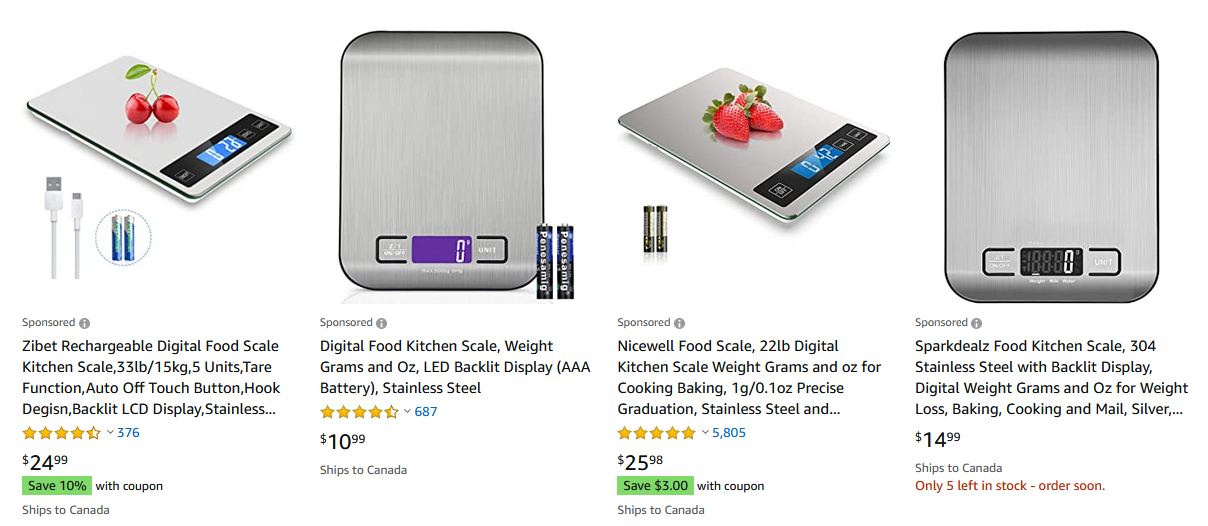|
Brown sugar, it is probably just about the most common sugar substitute. It has that iconic Earthy taste along with its slightly lower caloric content and glycemic index.
Molasses has a higher pH value than white granulated sugar. Therefore, brown sugar, containing a measure of molasses, is more acidic than white sugar. Consequentially, recipes designed for brown sugar typically contain baking soda as the leavening agent because coupled with the slightly acidic brown sugar it will react to foam and leaven; a reaction would not happen with pH neutral granulated sugar. When using white granulated sugar, it becomes necessary to use baking powder instead baking soda. If your ginger muffin recipe is hinging on the fact that the molasses is going to be acidic it can be disastrous to purchase the wrong kind of brown sugar. Not all recipe fails are due to miss step in your technique. If you want to know why your recipes are failing keep reading… 4 REASONS TO USE DEMERARA SUGAR
1. NOT ALL BROWN SUGAR IS CREATED EQUALLY
Your understanding of how brown sugar is made likely is that it is unrefined table sugar still containing a noticeable percentage of molasses. However, in our machine age it is either unrefined or partially refined soft sugar consisting of sugar crystals with some residual molasses content (natural brown sugar), or it is produced by the addition of molasses to refined white sugar (commercial brown sugar).
However, some brown sugar out there is actually “browned sugar.” In other words, it is refined white sugar that is toasted. In contrast, Demerara Style Sugar is a traditional brown sugar, originally created in Guyana (a colony formerly called Demerara in South Africa). 2. DEMERARA CONTAINS MORE MOLASSES
The “browned” sugar we mentioned has no molasses content and therefore does not have the pH value that your ginger muffin recipe may be hinging on.
Compared to golden and brown sugar, Demerara retains most of the natural molasses, giving it a dark colour and deep rich flavour with large crystals that give a crunchy texture and that good pH. 3. MORE RETAINED MINERALS
Unlike white, refined sugar, Demerara is very minimally processed. Demerara retains natural molasses, rather than having it added to a completely or nearly molasses purged white sugar. As a result, it keeps some of the vitamins and minerals which naturally occur in the sugar cane.
4. YOU CAN FIND IT ANYWHERE
There are many “natural brown sugars” and items made the good old-fashioned way, but Demerara style brown sugar is by far the easiest to find in any market and cheapest. Even Rogers, makes a good version of this sugar (though not quite like a Guyanese store might carry it).
+ BONUS REASON!!!
5. DEMERARA RHYMES
Finally, last but not least, Demerara rhymes with my name Tamara!!! I mean can it get any better than that? (Haha, I jest life can get whole lot better than).
An Ode to Demerara Sugar Sweetening cookies with good taste Brownest and fairest Demerara To what will I compare in haste? Just like the writer Tamara (okay so I am not a poet… I will probably look back on the post next year, blush at my silly poems, and then promptly delete it… but who knows what time will bring) DIFFERENCES BETWEEN NATURAL BROWN SUGAR AND DEMERARA SUGAR
Natural brown sugar tends to be a mixture of white sugar and molasses. The addition of molasses explains why brown sugar tends to have a somewhat moist consistency (see storage tips below). As a result, it's easier to mix into doughs, for example, while traditional demerara sugar tends to keep its texture and form. Traditional demerara sugar also has a deeper, darker flavor than that of brown because of its purity given that it's unadulterated, without the addition of any refined sugars. However, Roger’s ‘demerara style brown sugar’ does not keep its texture like ‘traditional demerara sugar.’ In find when using demerara style brown sugar it works just like natural brown sugar.
Uses
Demerara has become a favourite among coffee and tea connoisseurs, as it gives a special taste to cappuccinos, espresso and your favourite herbal tea. Because its crystals are larger, it also makes demerara a good candidate for sprinkling on baked goods like candied nuts and streusel toppings!
Comments
I write all the recipes in this book in the metric weight system. Wonder why? Why use a scale? Why weigh out a recipe?
Perhaps the concept of weighing out an item seems foreign to you. If you live, or have lived, outside of Canada and the USA you would find the Imperial system of cups and teaspoons just as foreign. Weighing out your ingredients has an ancient history, even with the Imperial system. I am sure you have heard of the classic pound cake. Right? Well, it derives its name from the fact you use a pound each of ingredient to make the cake. As evidenced in this early English cookbook: “Take a pound of butter, beat it in an earthen pan… then have ready twelve eggs, but half the white, [equal to a pound]… beat them up with the butter, and a pound of flour beat in it, and a pound of sugar...” – Hannah Glasse, The Art of Cookery Made Plain and Easy, 1747
“CORRECT MEASUREMENTS ARE ABSOL-ETELY NECESSARY TO INSURE THE BEST RESULTS. GOOD JUDGEMENTS, WITH EXPERIENCE, HAS TAUGHT SOME TO MEASURE BY SIGHT; BUT THE MAJORITY NEED DEFINITE GUIDES.” – Fannie Farmer, author of the Boston Cooking-School Cookbook, 1896.
Ironically, Ms. Farmer was the instrumental pioneer of the measuring cup and spoons. But her invention only caught on in the New World. Why is that? While her method was more accurate than her grandmothers written recipes “some flour” and “nuts of butter.” There was another universal measurement method known to man for a long, long time. And that is: the scale.
BUT ISN'T: A CUP IS A CUP, IS A CUP?
The cup is a cooking measure of volume, commonly associated with cooking and serving sizes. It is, traditionally, equal to half a liquid pint in U.S. customary units, or an amount between 200 ml and 250 ml in the metric system, which may vary because of location.
THE MOST COMMON MISCONCEPTION IS THAT 8-OUNCES (224 GRAMS) EQUALS ONE CUP; ALWAYS AT ALL TIMES, NO MATTER WHAT, AND WITHOUT EXCEPT-ION.
Nothing could be further from the truth!
For liquid ingredients like water and milk this is true, but the buck stops there. A cup is a measurement in quantity, not weight. All other ingredients, even ones you can pour like oil and honey, have differing weights per cup of volume. For example: All-Purpose Flour: 120 grams (4.25 ounces) Baking Soda: 520 grams (18.36 ounces) Brown Sugar: 210 grams (7.5 ounces) Butter: 225 grams (8 ounces) Chocolate Chips: 170 grams (6 ounces) Cocoa powder: 85 grams (3.03 ounces) Confectioners' Sugar: 113 grams (4 ounces) Granulated Sugar: 195 grams (7 ounces) Honey: 335 grams (12 ounces) Maple Syrup: 310 grams (11 ounces) Molasses: 335 grams (12 ounces) Vegetable Oil: 195 grams (7 ounces) As you can see if you tried to use the eight-ounce conversion per cup for every single ingredient you would end up with some kind of disaster in your kitchen. I WANT TO EAT NOT PERFORM A SCIENCE EXPERIMENT.
Sure, weighing seems more like science class when you could use pretty measuring cups shaped like hearts, but the truth is… it’s just more accurate.
“THE MIXING AND BAKING OF CAKES REQUIRES MORE CARE AND JUDGEMENT THAN ANY OTHER BRANCH OF COOKERY.” – Fannie Farmer, author of the Boston Cooking-School Cookbook, 1896.
If you crave consistent results with your baked goods, and especially if you venture into pastries or breads, you will want to get in the habit of weighing ingredients.
I find it much easier weighing the ingredients. And less cleaning, as most times you can weigh and add the ingredients directly to the bowl you are using to make the dough. It makes for fewer spoons and cups to clean. It is not lazy; it is just working smart. I have read many an emigrant testify some-thing along these lines: ‘After a lifetime of baking I, too, came to realize the importance and ease of weighing instead of measuring. It was a little challenging at first, but now it’s second nature. I have totally embraced weighing ingredients as it is far more accurate, less messy, and you can use any recipe from anywhere without worrying about conversions.’ THE METRIC SYSTEM
If math is not your strong suite than the metric system is for you. Because the metric system is based on multiples of ten, when the recipe says divide dough into halves, thirds, or whatever, grams and millilitres make it easy to do the math and get it right.
For example, a U.S. pint is 16 fluid ounces and a British pint is 20, so unless you know where your recipe is from you will have difficulty if a recipe asks for half a pint of liquid. Math is so much easier when using the metric system instead of the American system with liquid/solid ounces, cups, etc.
DO NOT FORGET TO ZERO-OUT “TARE” THE SCALE.
If you put the bowl on the scale before you turn it on, it will not weigh the bowl. Conversely, if the scale is already on and you place the bowl on top, you simply hit “tare”, which zeroes out the weight and then you can add the ingredients.
IT’S AS SIMPLE AS THAT!
So find a recipe, start weighing, and enjoy baking!
So which do you choose?
I thought I'd include links to pretty measuring cup set and a digital kitchen scale at the end of this article for the fun of seeing how many people click on the scale vs. the measuring cup set. However, when I searched Amazon to find these products I found so much more! Perhaps the perfect solution for those accustomed to measuring with cups and teaspoons. Below is a measuring cup scale!!! The reading is one the handle. Do you see it?!? And below is a digital scale teaspoon! I mean what a terrific idea!
If these products intrigue you as much as me I have made the photos linked to Amazon so you can order one too and get baking! |
Click here for the best available price for a Digital Measuring Cup/Scale on Amazon.
Affiliate Links Disclaimer Life After Gluten receives a small commission from the sales made through our affiliate links. However, I only promote affiliate products that are relevant to the articles that brought you here. The commissions received through your purchases help maintain this site. Thank you for your support!
Happy to meet you,
If you are that person with a million and one allergies and intolerance I am there to say you are not alone! Life After Gluten can be better than life with wheat. Living lactose-free since 2007 and gluten-free since 2013. Also intolerant and/or allergic to mushrooms, soy, and yeast. Categories
All
Archives
March 2024
Affiliate Links Disclaimer Life After Gluten receives a small commission from the sales made through our affiliate links. However, I only promote affiliate products that are relevant to the articles that brought you here. The commissions received through your purchases help maintain this site. Thank you for your support!
|
Photo from Brett Jordan










 RSS Feed
RSS Feed
